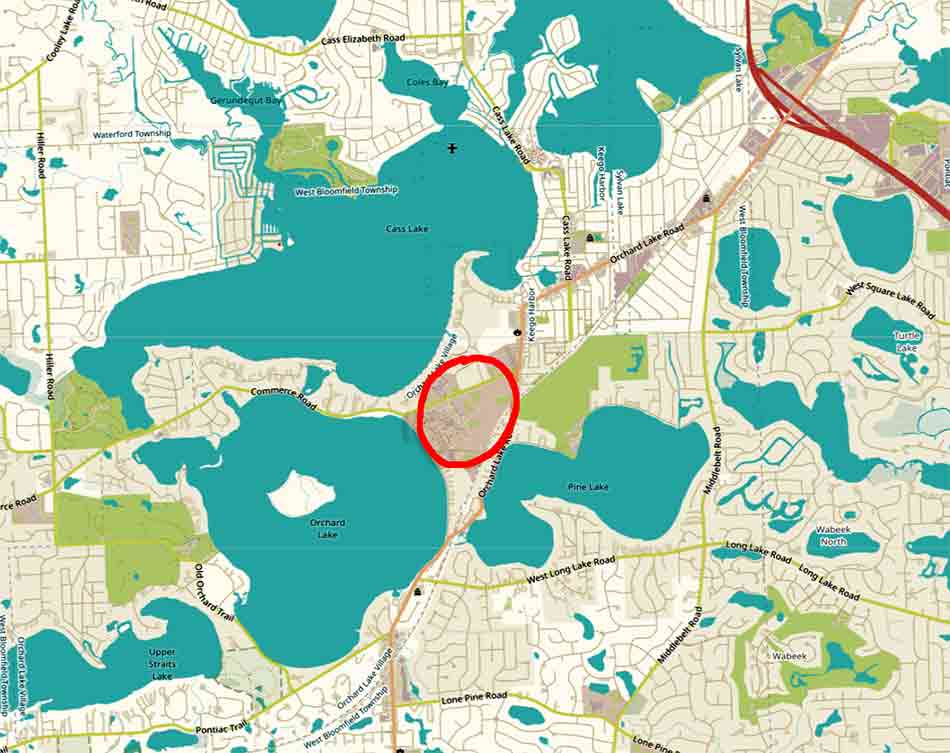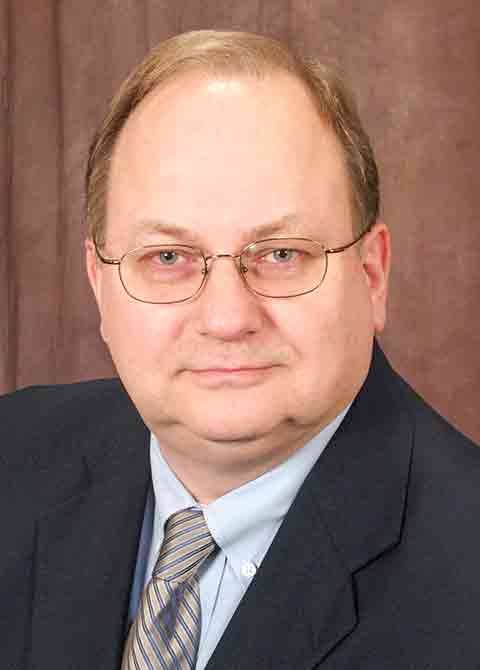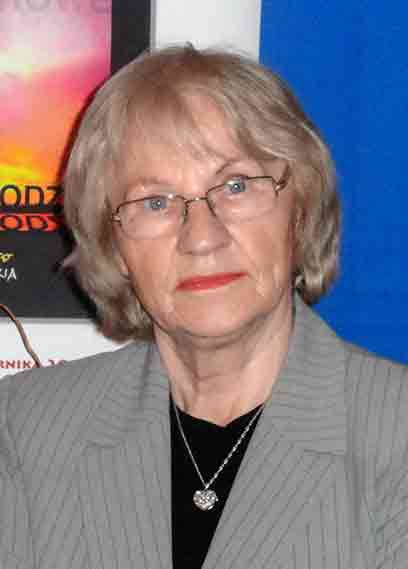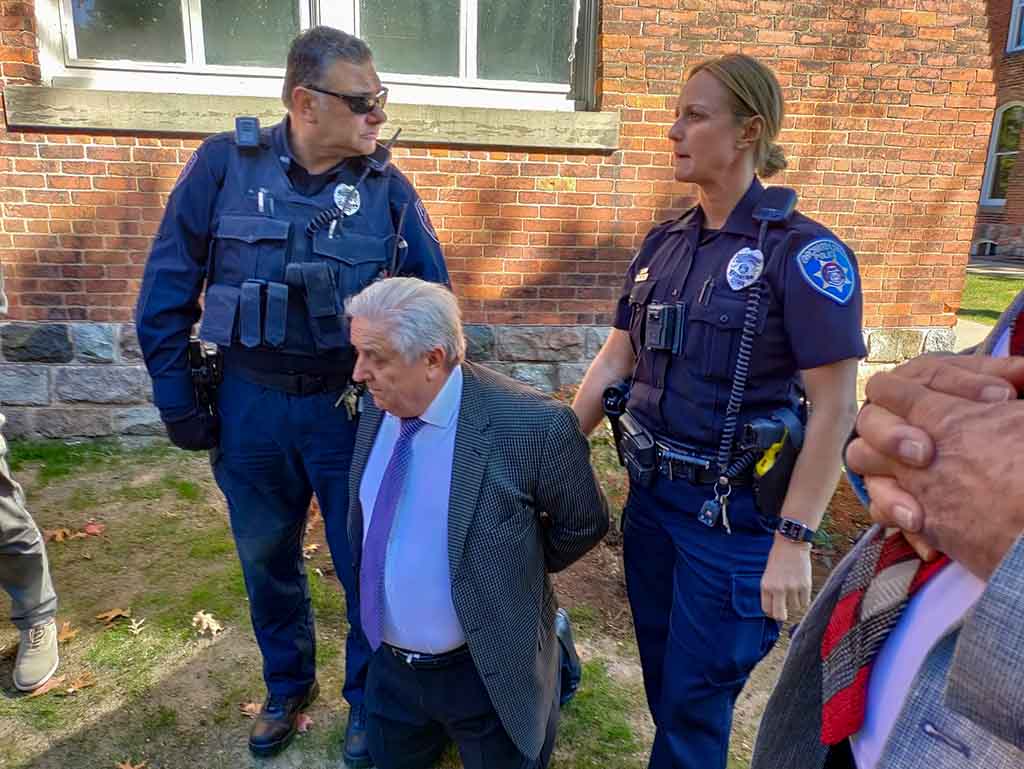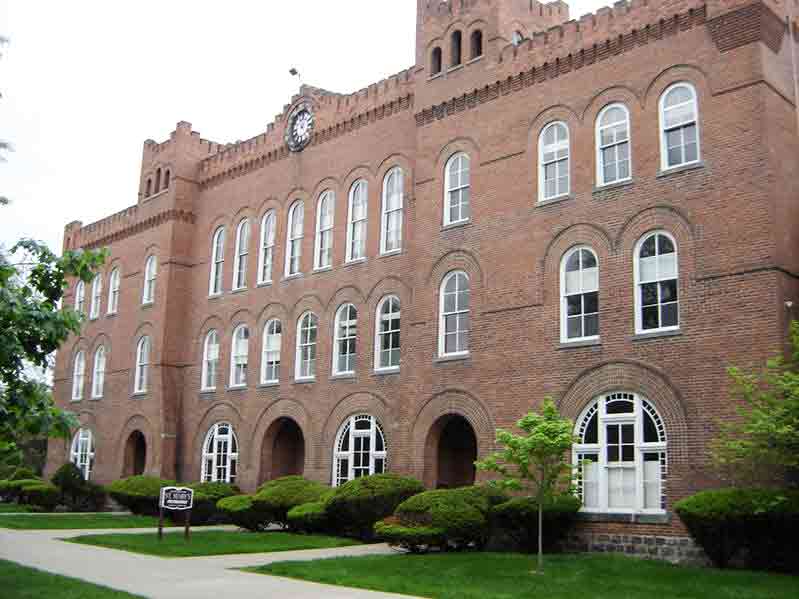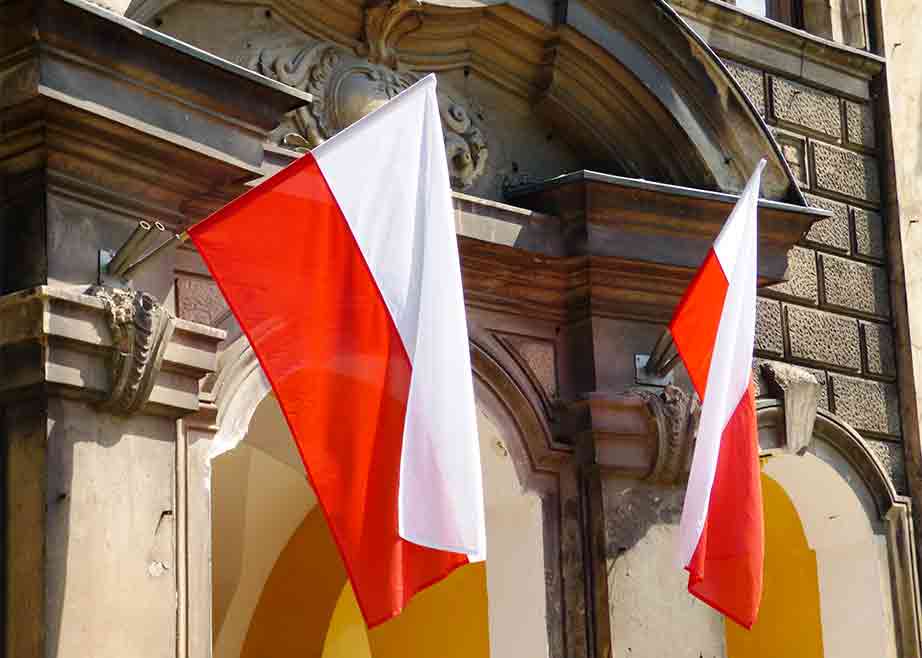With this article, we would like to encourage all Americans of Polish descent and Polish government officials to reflect, and then to make sensible, joint efforts to save Polish national heritage abroad, in particular the unique archives of the Polish Mission in Orchard Lake, Michigan.

The history of the Mission and its development is inextricably linked with the work of four outstanding clergymen: Fr. Józef Dąbrowski (1842-1903), Fr. Witold Buhałowski (1862 - 1925), Fr. prelate Roman Nir (1940 -), and Fr. canon Stanisław Flis (1945-2021).
Fr. Józef Dąbrowski was born on January 27, 1842 in the town of Żółtańce, in the former Kingdom of Poland, to a patriotic intellectual family. Father was an engineer, mother — a wise Polish patriot. He received primary education at home. He continued his education in Lublin, and in 1862 he began studying mathematics and natural sciences at the University of Warsaw, which he quit taking part in the January Uprising. After the fall of the uprising, he continued his technical studies in Switzerland, and then began theology in Rome. After being ordained a priest in late 1869, he came to America and took up pastoral work among the Polish community in Wisconsin. Here, he served Polish immigrants for 13 years. At that time, he built a new church, rectory, school and monastery. He catechized the indigenous American people. He taught land cultivation and gardening to the American Indians. He established a printing house and printed textbooks and religious books. He played a decisive role in bringing the Felician Sisters to America, which was an event of extraordinary importance, because the sisters made great contributions to work for Polish emigrants. They founded new monasteries and provinces, worked devoutly in Polish parishes, schools, orphanages, and homes for seniors.
The work of his life, which was the creation of the Polish Mission of Orchard Lake Schools, Fr. Dąbrowski started in 1883. After arriving in Detroit, he bought a plot of land not far from the convent of the Felician Sisters and, on July 24, 1885, he laid the foundation stone for the construction of the seminary whose patrons were the Slavic saints — Cyril and Methodius. In the first year of its existence, 27 students crossed the threshold of the seminary, and their number grew year by year. Fr. Józef Dąbrowski also founded a secondary school for boys from Polish families to educate future priests and leaders for the Polish diaspora. In addition to the Seminary, he also founded a humanities gymnasium and the College of the Blessed Virgin Mary. He himself acted as rector and professor. However, his desire was for specialists in the respective fields to teach individual subjects. He went on a journey through Europe in search of suitable professors willing to teach at the seminary and at the Academy of the Felician Sisters. He found teachers-educators and patriots. In addition to his scientific and educational work, he was known for "chopping wood and carrying water, laying bricks, pouring sand and cement", he was a real and spiritual builder of the church, rectory, school, monastery and the first seminary building. He laid the foundations for the Polish Mission at Orchard Lake. Fr. Dąbrowski died in 1903, but the Mission was developed by another clergyman and teacher, whom he recruited to work from Rome.
In 1903, schools founded by Fr. Dąbrowski educated 222 students. After a few years, the new rector, Fr. Buhaczkowski, doubled the number of students. In the 1909/10 academic year, there were 450 students. There were problems with the premises related to the number of students. Fr. Buhaczkowski decided on the most risky, even gambling, solution. Although running a great organization, but lacking financial means, he took advantage of the extraordinary opportunity created by the bankruptcy of the Military Academy in Orchard Lake, located about 20 miles from the city, and he bought the property and all its buildings from the owners. The vast area, 3,100 acres of land, located in a picturesque and remote area between charming lakes, was built up with eight larger school- and administrative buildings and the entire farm facilities needed for farming. It cost $83,000. Fr. Buhaczkowski took loans for this purpose against the seminar property, but he had to collect 33,000 dollars beforehand, to be able to finalize the transaction. He gave everything he had, borrowed what he could from his friends, and finally made a deal. The Polish Seminar and schools, on the initiative and thanks to Fr. Buhaczkowski began their new life in Orchard Lake, Michigan in 1909. Over the next years, the center was modernized and expanded. Buhaczkowski began their new life in Orchard Lake.
Source: OpenStreetMaps.org
Throughout all the years of its existence, the center in Orchard Lake has collected and is still collecting documents from the life of the Polish community, valuable mementoes of great Poles in exile, works of art and other archival materials of the Polish community. It grew among the ranks of research centers thanks to the work of Fr. Dr. Roman Nir, who compiled an detailed index of the archives gathered here. He took the position of director of the archive in 1978 and devoted himself entirely to working for the mission. Under his leadership the Archive of the Polish community in Orchard Lake is still in operation today. The Center can be used by scientists, students, historians and tourists.
Its collections, according to the list of Fr. Roman Nir, were grouped into three main departments:
- Collections of school institutions and centers;
- Polish collections;
- Polish collections.
They include: documentation of Polish parishes, documentation of Polish organizations, archives of the Polish press, special collections, which include: iconography, philatelic collections, numismatics, cartography, posters, military, audiovisual materials and works of art. The numismatics department stores medals minted on the occasion of various cultural, religious and patriotic celebrations. There are also numerous medals and gorgets minted by various religious associations at parishes and Polish organizations. The archive holds a large collection of Polish coins from the Middle Ages to the present, and coins from various countries around the world, described according to international catalogs. The photographic documentation consists of thousands of photographs, both collective and individual, depicting various aspects of cultural, social, religious, political and social life of the Polish diaspora. Photos from the World War II period, received from the World Association of Poles from Abroad in London, were specially segregated. The audiovisual materials include recordings of school celebrations, inaugurations of the school year, graduations and awarding the "Fidelitas Medal" to outstanding Poles, and alumni meetings. Recordings of banquets in honor of distinguished guests visiting Orchard Lake, e.g. the visit of Card. Karol Wojtyła (1969 and 1976), card. John the King, cardinals, archbishops and bishops from Poland and Rome. Reference book collection. Personal collections.
All in all, they include:
Archives, Library and Museum of the 2nd Corps of General Władysław Anders.
In 1983, the Foundation and Center of the 2nd Corps in the United States decided to deposit their collections at the Archives of the Polish Diaspora in Orchard Lake. The organization renovated two large rooms and purchased equipment to organize an archive, library and museum of the 2nd Corps. In May 1984, on the 40th anniversary of the victorious Battle of Monte Cassino, the collection was officially opened to the public. One of the most valuable items is the archive that holds the original personal files of the soldiers of the 2nd Corps. The personal documentation is supplemented by operational maps, films and video tapes, exhibits related to the life of a soldier, such as: medals, badges, uniforms.
A separate section consists of commemorative photos and negatives deposited by soldiers. Among them there are historical articles from around the world on the history of the Polish Army "On the way to Poland". Photographs of the Officers' Legion -SBS Carpathian. Hundreds of articles on the history of the organization of the 2nd Polish Corps. This section includes the operational maps of the 2nd Corps in the Battle of Bologna.Archives, Museum and Library of the 1st Polish Armored Division.
On July 2, 1989, the Archives, Library and Museum of the 1st Polish Armored Division were opened. Gen. S. Maczek. The collections were divided into 3 sections: 1. 1st Armored Division, 2. Volunteers of the Polish Army in Canada, 3. Women-Home Army soldiers, a camp in Germany liberated by the 1st Division. Each department has archival, library and museum collections.Archives, Library and Museum of the Home Army.
The collections of the Home Army were opened on November 12, 1989. Archives were divided into several sections.Archives, Library and Museum of Polish Aviators.
Opened on September 1, 1990 due to the 18th World Congress of Polish Aviators in Detroit. The archives include reports, protocols on the activities of individual Wings, materials from world aviation conventions and personal documents of aviators, ID cards, photos of planes and pilots. Documents concerning the plane crash in Gibraltar, during which General Władysław Sikorski died, deserve attention.Museum of the Polish Association of Former Political Prisoners.
Founded on December 2, 1990. It contains archives about the activities of the Association of Former Political Prisoners of the German Concentration Camps and Soviet Labor Camps. These are personnel files, extensive correspondence with various offices and institutions regarding the status of prisoners who for a long time did not have a clear status. The museum contains 18 large paintings by J. Komski.Collections of the Polish Scouting Association.
Archival materials concerning the following issues: scouting in America, the history of the ZHP (Scout) District for the United States, the Delegation in London, materials from the District conventions, chaplaincy, Scouting Friends Clubs, meetings and anniversaries. Materials for the history of scouting in individual cities include the "Tatry" and "Warta" troops in Chicago, "Ziemia Rodzinna" and "Kresy" troops in Detroit, and scouting in the states of: New York, New Jersey, Connecticut, California, scout centers in Buffalo, Philadelphia, Rochester, Washington.Museum of the Polish National Association.
On August 4, 1991, the PNA Museum was opened, to which the collection of the late Alojzy Mazewski, the president of the Polish American Congress and the president of the Polish National Association, was transferred.Collection of Dr. Edward Różański.
Museum of Fr. Józef Dąbrowski.
Museum of Polish Sports.
The Book of Emigration Writers.
The book collection consists of materials from the collection of the poet Edward Dusza, who transferred the correspondence of such writers as: Józef Cat-Mackiewicz, Wacław Iwaniek, Aleksander Janta. The book collection, on the other hand, consists of almost a complete set of émigré publications from England, Canada, the United States and Italy.Archives and Museum of District VI of the Association of Polish Army Veterans of America.
Archives, Library and Museum of Radio and Polish Television.
The collections of the Polish media were made available on August 15, 1996. The basis was the complete collection of several Polish radio stations from Boston, Chicago and New York. The largest collections come from Robert Lewandowski, they include radio and TV.Archives and Library of Polish Education.
Archives of Polish Pharmacy.
Biographical materials.
The creation of this section became necessary due to the increased interest in biography on the part of Polish secular and clergy activists. The growing needs in this area are not satisfied by the Polish biographical dictionary of Fr. F. Bolek or 1997's Who's Who in Polish America.Archives and Museum of the Catholic League for Religious Assistance to Poland.
Archives of the Polish American Congress for the state of Michigan.
and others.
What is the Polish Mission of Orchard Lake Schools, which is located near Detroit, picturesquely situated among three lakes, where real estate prices are breaking records? For the average person visiting the website, it is not entirely transparent what the relationships and financial relationships between the Polish Mission, Seminary, high school and archives are. You can guess that Polska Misja is an American non-profit 501(c)(3) foundation managed by a supervisory board. Pictures and descriptions of people in the council are on the website. However, any further correlation is more complicated, as both the Seminary and the secondary school are separate institutions. They are supervised by the Archdiocese of Detroit. Thus, the adjective "Polish" is slowly receding in this picture.
Fr. Dąbrowski and people of his kind began the work, the effects of which exceeded their wildest expectations. The American Polonia has invested a lot in collecting, preserving, and supporting Polish national heritage abroad. As a result of various circumstances (loosening the ties of the Polish diaspora with Poland in the years 1945-1989, no new emigration, ...), all Polish institutions are slowly losing their importance and splendor, and they are slowly fading. The same applies to Polish scientific disciplines at American universities. For many years, there was a large group of Polish professors and professors-Americans of Polish origin at American universities, who professionally dealt with Polish history, political science, culture, and the Polish language. In this group, prof. Anna Cienciala, who was the first in the US to write a scientific article about Katyn., should be mentioned. There are also professors: Tadeusz Gromada, James Pula, Mieczysław Biskupski, Kamil Dziewanowski, Donald Pienkos, Nil Pease, Michael Mikoś, the late professor Tadeusz Radziłowski, and many, many others. Most of them are retirees who are still actively organizing Polish intellectual life in the United States. Soon there will be no Polish narrative at American universities. At almost every major American university, there used to be a Polish unit promoting the Polish narrative with the active support of the Polish diaspora. This was possible for several reasons: there was a political base in the form of Polish congressmen and other politicians who provided political support for such programs. The Polish community wanted to educate their children in the spirit of Polishness, and the knowledge of Poland and the take on Polish history was very different from the version of the Polish People's Republic. The Polish community was also able to financially support such programs. The postmodern policy of American universities limits the role of the American humanities and the role of Polish programs. Hundreds of positions in the American academy are naturally extinguished. This is done in a very cynical way. If the subject taught becomes unprofitable, that is, there are not enough students, it is extinguished and the professor who taught the subject is fired. Thousands of professors retire during this period, but new professors are not hired for the humanities positions, which allows them to eliminate these jobs. This is how Polish national heritage fades.
Polish national heritage abroad is not only about the universities, but also about the monuments to Polish heroes, the renovation of which costs a lot. If a given ethnic group does not react to the decay of monuments, they are often dismantled and scrapped. For now, the Polish diaspora is doing fairly well with respect to protecting monuments, but Polish churches are another matter. In every big city inhabited by Poles the situation was similar. First, they built a house for themselves, and then a church around which the life of Polish emigrants continued. Liberalization of social life began in 1968. The number of believers decreased, and the churches began to decline financially. Later another problem arose. Archdioceses sued for sexual harassment had to raise funds for compensation. One of the sources of financing for damages were deserted churches, which were usually located in financially attractive areas. So churches were sold, then demolished in order to build a parking lot or other "inspirational building" on their sites, in order to bring profit to the investors. This process continues and the number of Polish churches destroyed is already in the hundreds. An example is the number of recently liquidated churches in Chicago.
There are several institutions which, by definition, are to promote and protect Polish national heritage in the United States. They include the Kościuszko Foundation, the Piłsudski Institute, and the Polish Museum in America. One should also mention the large collections of Polish artifacts at university institutions. The Hoover Institute is a prime example of this:
The largest center of Polish heritage materials in America is the Polish Mission, Orchard Lake Schools.
The measurable, emotional and historical wealth of these collections requires great responsibility and prudence in deciding on the protection of this place at the moment. In 2002, an unfortunate course of action has started in this institution, which may lead to the closure of this center. The Polish community in Michigan has long been deeply concerned about decisions that are not always in line with the vision of the center's founders. It was supposed to be a center educating priests for Polish parishes in the USA, and it was supposed to be a center for educating leaders of the Polish diaspora. It is difficult to argue with the demographic changes in American society. There are no appointments to the seminary, the high school has adopted the American standard, where there is less and less Polishness in this institution. The solution to this problem is not the Americanization of the entire center, but the creation of a vision of development in line with the standards of the 21st century, which does not mean eliminating the Polishness from this project. The Polish community from Michigan notices the danger for Orchard Lake, which, once again, is located in the areas ideal for investors. This danger is real and therefore we would like to strongly emphasize that the entire American Polonia, which has cared for the development of this center for decades, will not allow it to be taken away. We must also say openly that scandals are rampant around the Orchard Lake facility and dealt with by the courts. This whole issue does not have a positive effect on the image of the center and the Polish community itself, and it must be resolved as soon as possible. Please, everyone reading this article, see about its dissemination in the United States and other countries inhabited by the Polish diaspora, especially since we know similar cases from Switzerland, France, Germany and Great Britain. We also ask the Polish Ministry of Culture and cultural and higher education institutions to notice the problem and start work on preserving and protecting Polish national heritage abroad.
We would like to thank the editor, Edward Dusza, who is very much involved in this matter for providing us with the archival article of Fr. Roman Nir on what treasures of Polish national heritage are located in Orchard Lake.
Translation from Polish by Andrew Woźniewicz.



